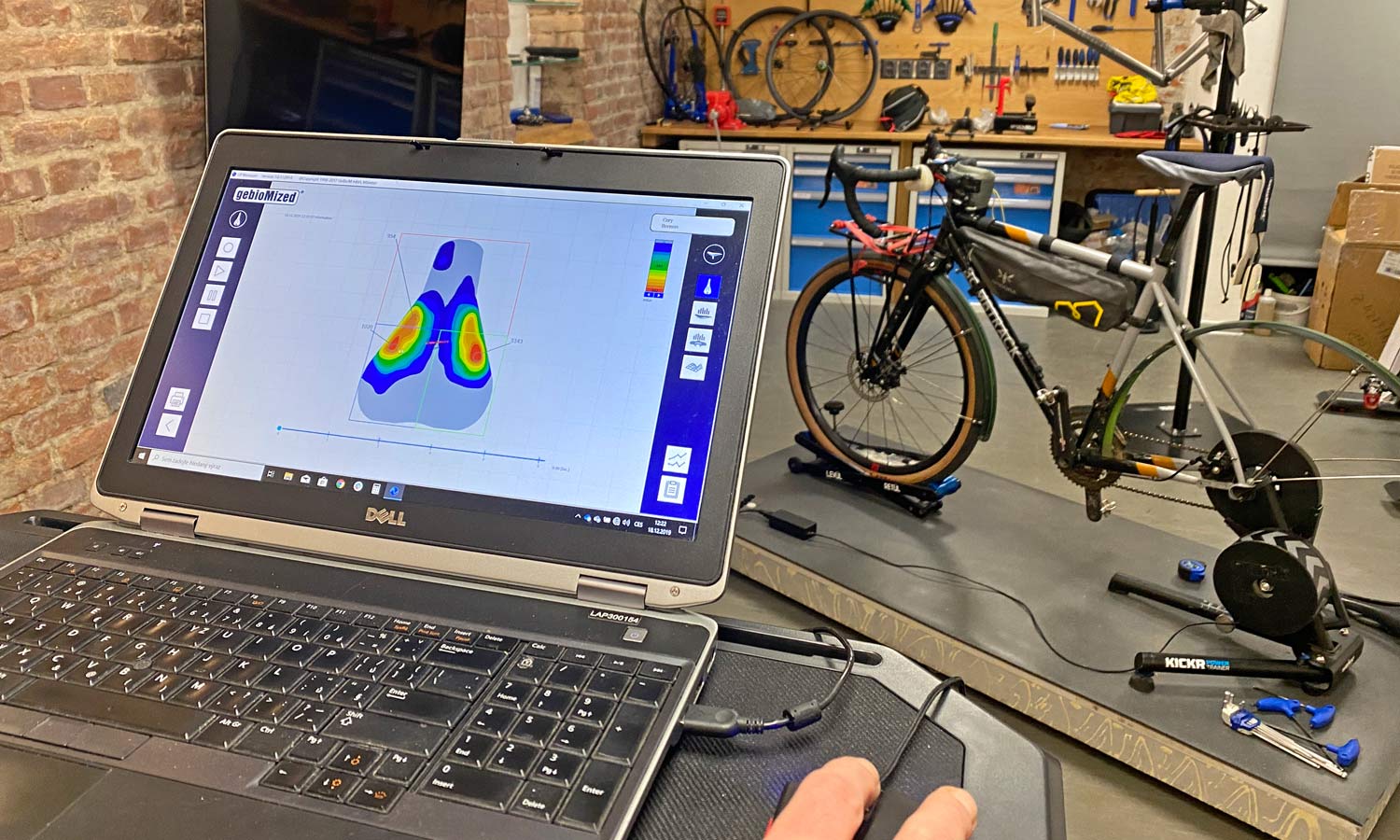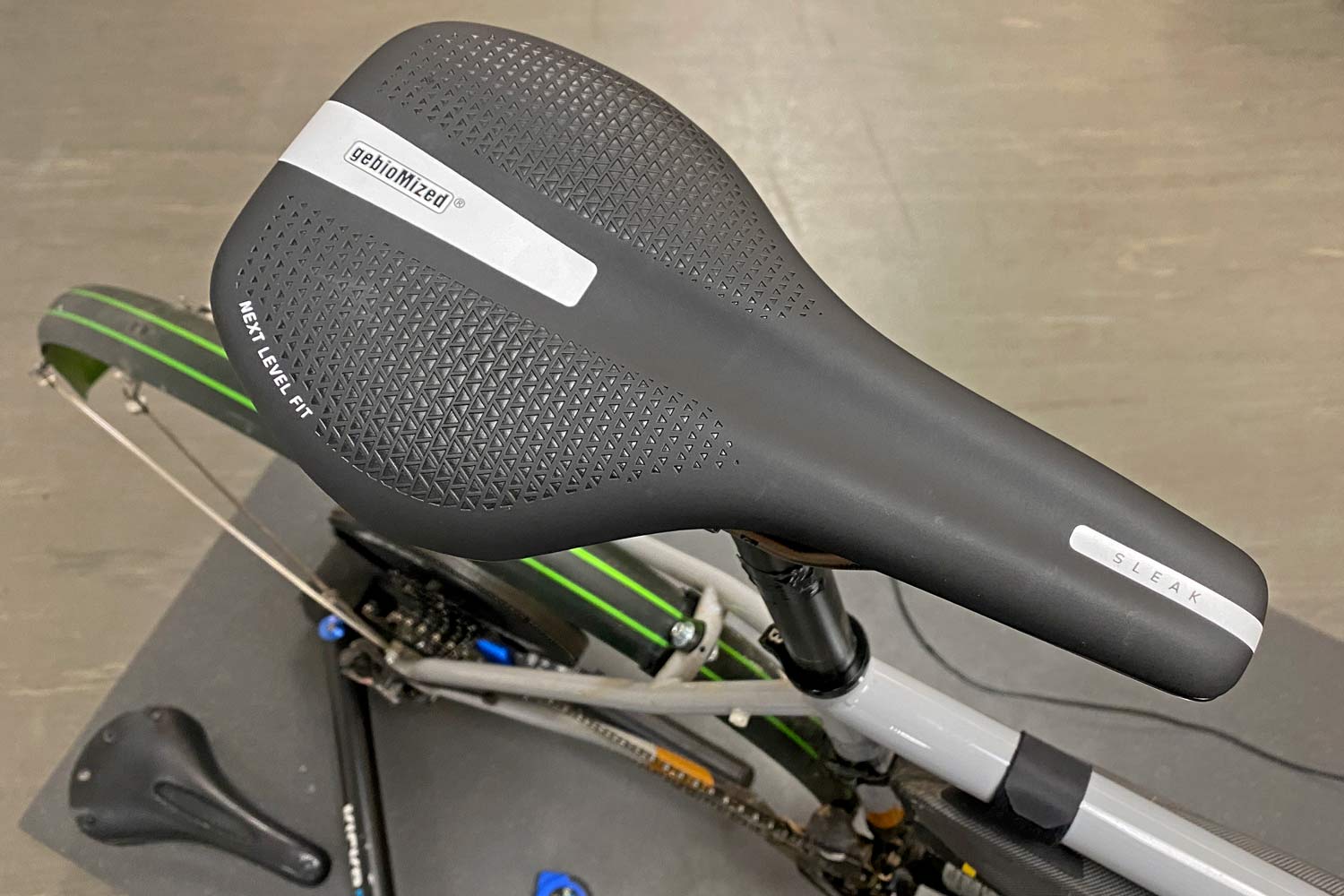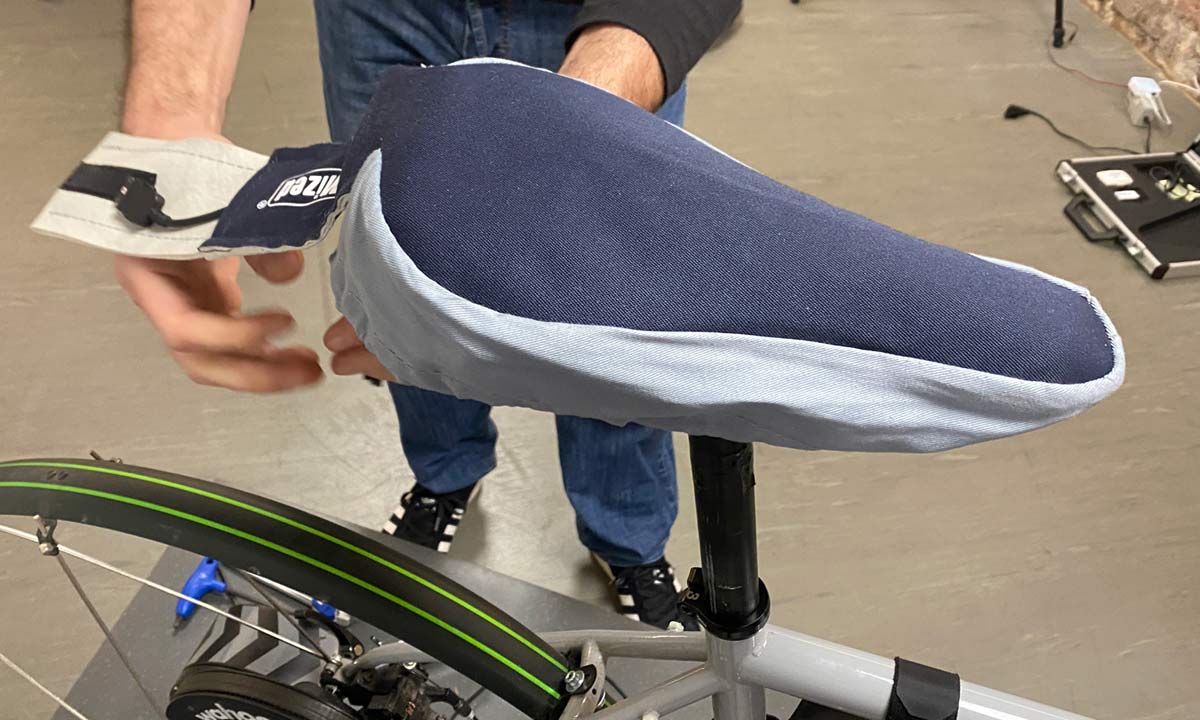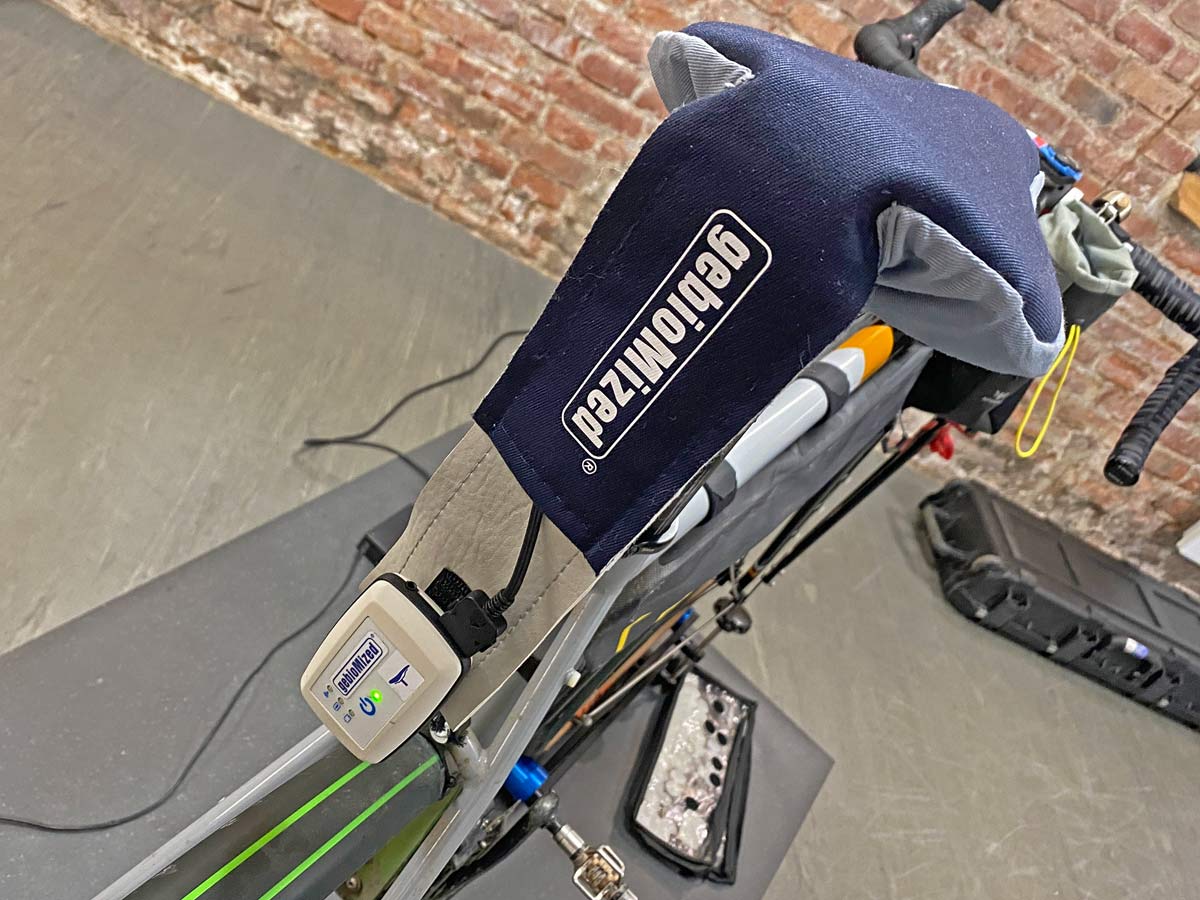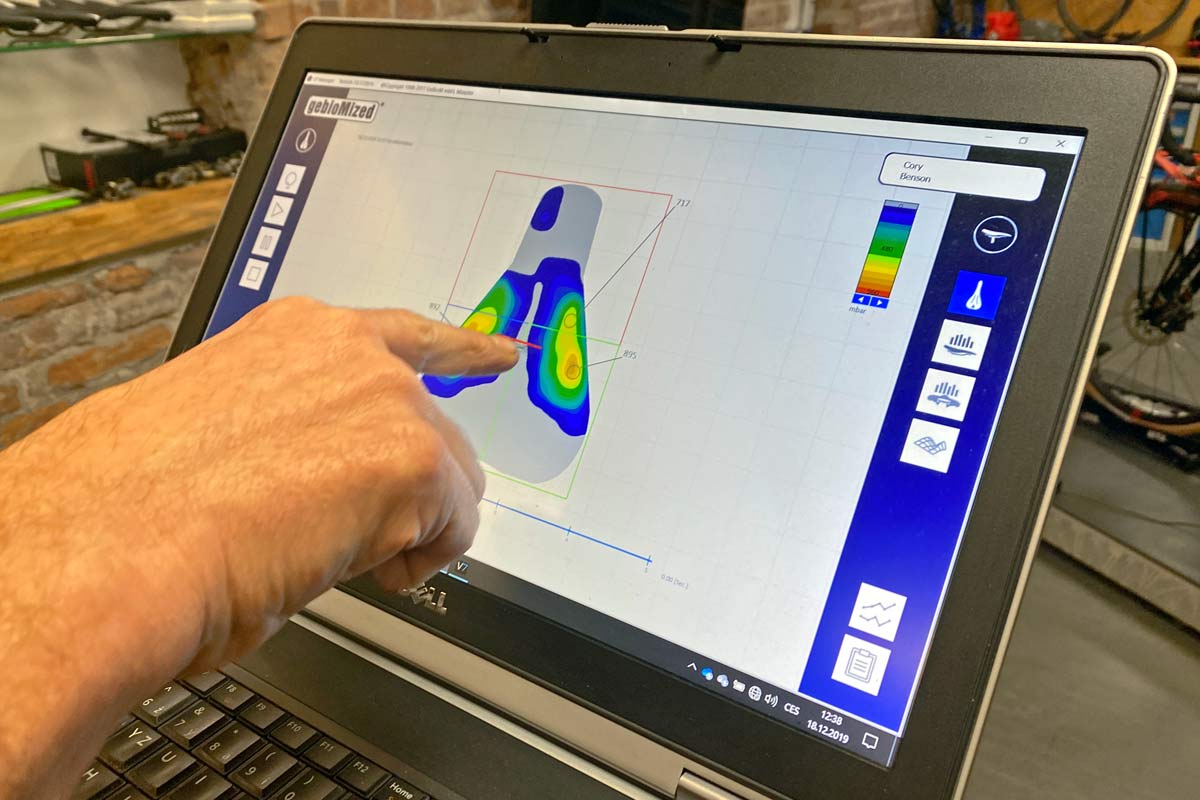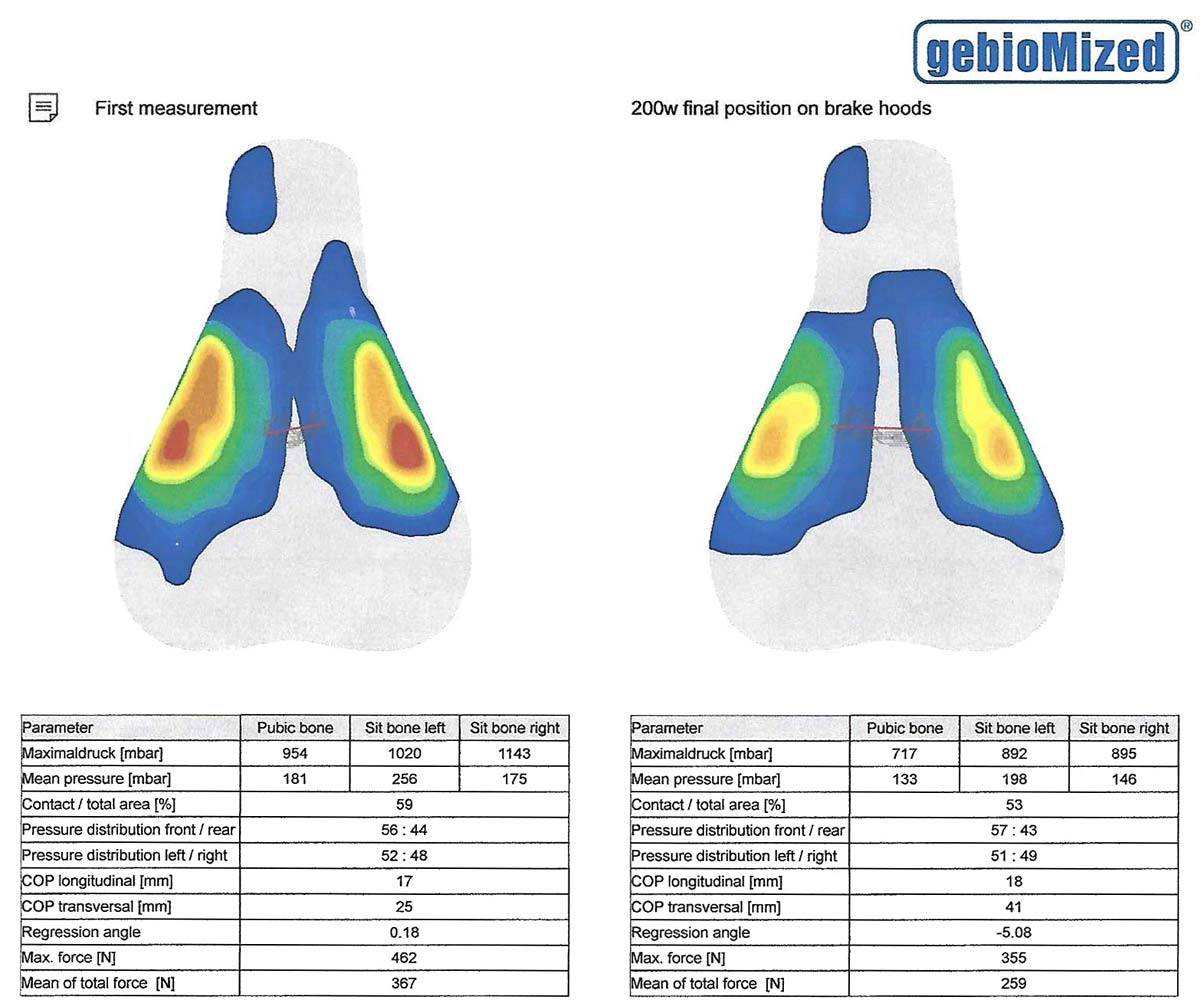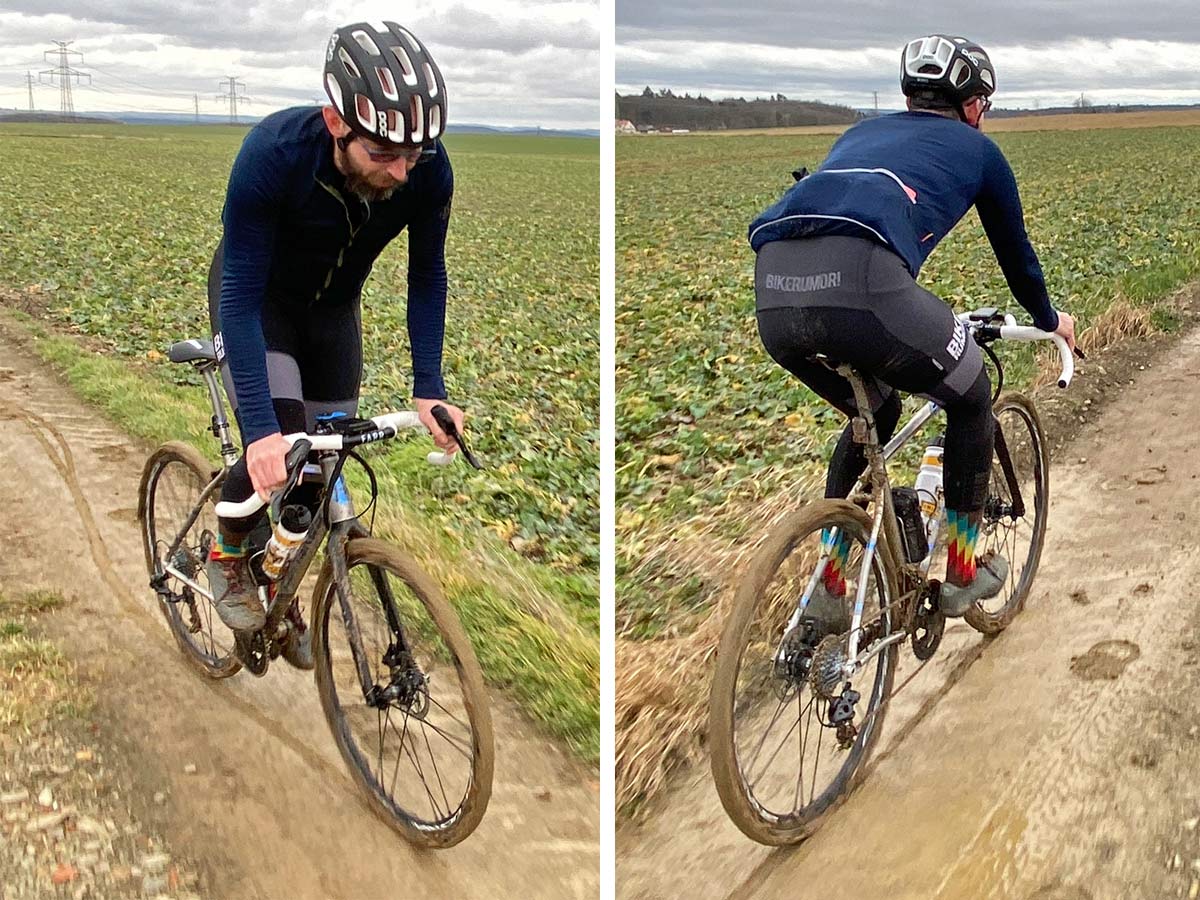The first rule of Secret Saddle Club is, we don’t talk about… wait, scratch that. Saddle fit is incredibly important for any cyclist. Getting it right truly can be a science, not just a mysterious art or a guessing game. So, I went to a professional bike fitter equipped with GebioMized pressure mapping tech to select the correct saddle for my butt (pelvis actually), and to dial in its optimal position…
GebioMized Secret Saddle Club pressure mapping tech
Obviously, technology isn’t the only way to get your saddle set up properly. Most of us ride around on bikes with saddles set by eye. But for a cyclist experiencing comfort issues, looking to change saddles or their position on the bike, or just to optimize how they sit on the bike, the GebioMized pressure mapping tech was worth looking into. And while their own saddles are a driver in how I ended up in the fit studio in the first place (like their Sleak 145 above), most saddles can work with the system.
GebioMized is first and foremost a biomechanics company with expertise in bike fitting, from amateurs to professional cyclists – optimizing rider position with their original pressure mapping concept since 2001. Their saddle business is a secondary byproduct of that work. And while they surely would love more people to buy their saddles, I get the sense that they’d be just as happy to have you support their saddle partners as well.
Why do they call it the Secret Saddle Club?
The secret part of the GebioMized club has its roots in pro cycling team sponsorship deals, with brands demanding riders on their saddles. But when pros have issues with a saddle they go to bike fitting pros. After Chris Froome having saddle problems in 2018, he ultimately ended up on an unbranded Sleak when he took third in the Tour de France. That evolved last year into an official saddle fitting partnership between GebioMized & Team Sky (now Ineos), so now Tour winners Froome, Geraint Thomas & Egan Bernal all use this pressure mapping to optimize their saddle choice & bike position.
How does a saddle pressure mapping work?
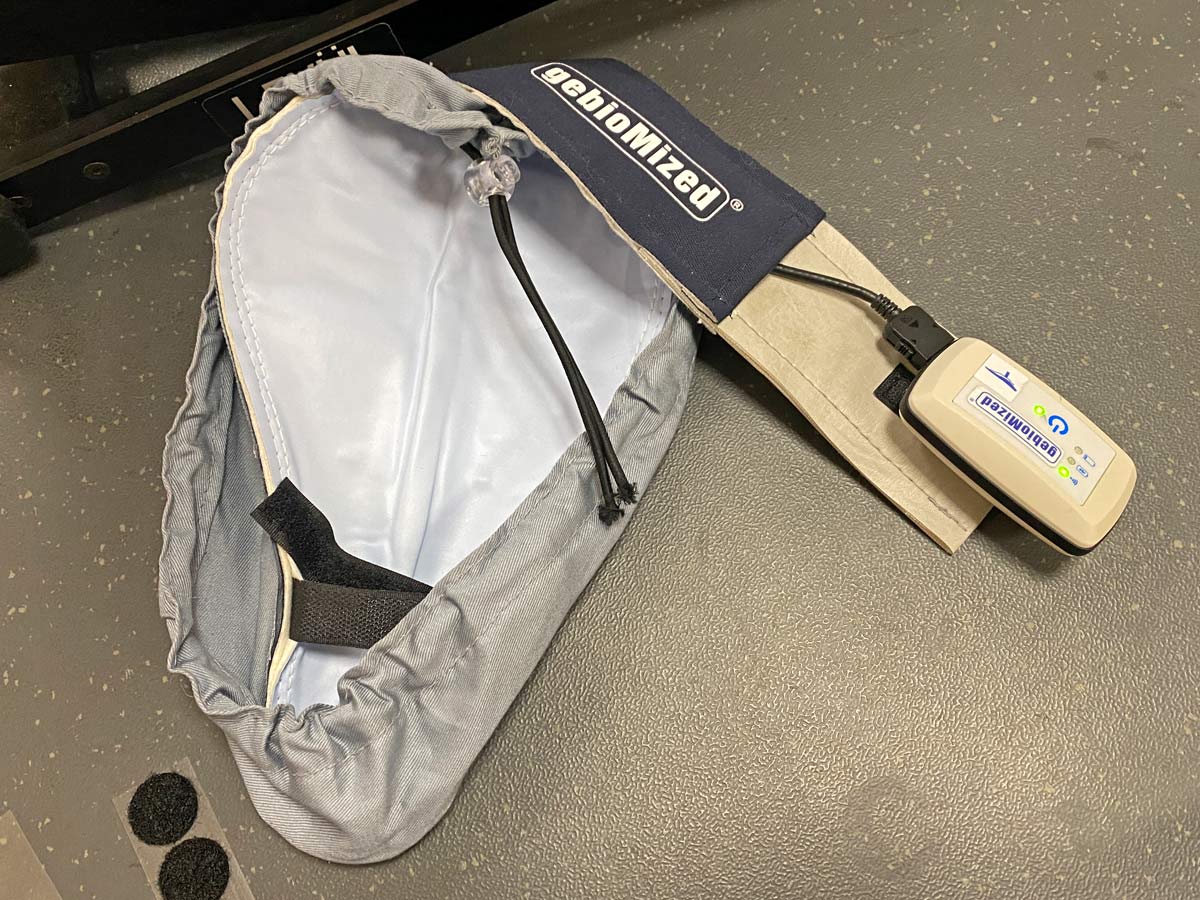 GebioMized developed a smart saddle cover that embeds a thin film, flexible pressure sensor mat that is able to drape over almost any saddle shape to collect real-time pressure data between the rider & saddle while riding.
GebioMized developed a smart saddle cover that embeds a thin film, flexible pressure sensor mat that is able to drape over almost any saddle shape to collect real-time pressure data between the rider & saddle while riding.
In fact, they also have flexible pressure sensor mats built into insoles to measure pressure in your feet while pedaling, in pads to optimize pressure on the handlebar, aero bar extensions, and even mountain bike grips. All use the same technology, an array of sensors measure & relay real pressure gradients as you pedal the bike.
Inside the GP Bike saddle pressure mat, 64 individual sensors in a tightly spaced array are able to precisely identify and evaluate pressure intensity and gradient. A small transmitter hangs off the back of the saddle cover, sending the data wirelessly to a connected PC. On the road measurement could be done with a support car, but most cyclists will use it on an indoor trainer like I did, to allow small adjustments.
Getting fit with KOA.cz
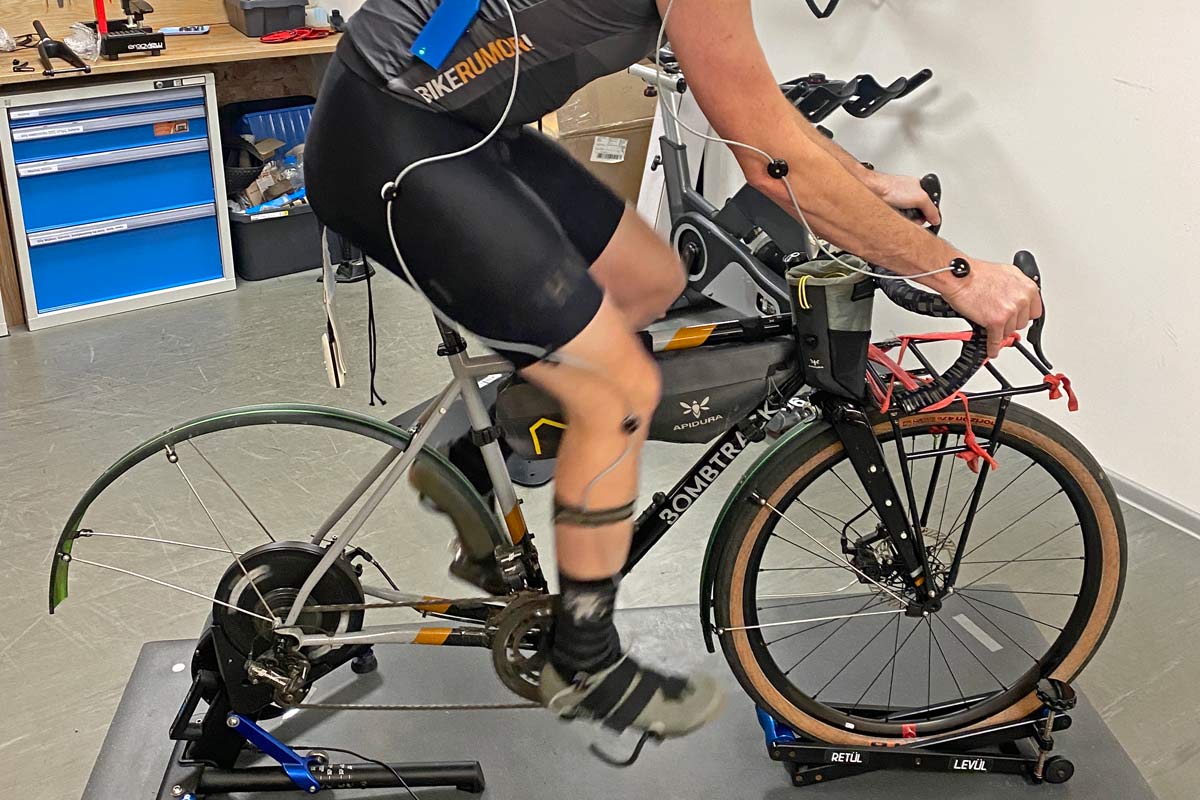 To get the saddle measurement right, I first had my fit analyzed with a Retül motion-capture bike fit by Jan Falge of KOA.cz in Prague. Then cycling through small saddle position adjustments, I rode with a constant 200W power output while on the brake hoods to see the impacts of each change.
To get the saddle measurement right, I first had my fit analyzed with a Retül motion-capture bike fit by Jan Falge of KOA.cz in Prague. Then cycling through small saddle position adjustments, I rode with a constant 200W power output while on the brake hoods to see the impacts of each change.
First, I had settled on the flatter GebioMized Sleak saddle shape, then measured my hip width/sit bones with an analog tool. Then, factoring in sit bone width and my back & hip angles, as measured in the Retul fit, my fitter determined that the 145mm wide V-shaped Sleak would most likely be the best starting point for me.
Since I had not been experiencing numbness, we opted for the closed-top saddle with a pressure relief channel, and could try the cutout version if pressures were high.
Basically, once we settled on the starting saddle & my ideal bike fit, it was a trial and error process of ride to measure, take a look at the resulting pressure gradient, and adjust the saddle position to eliminate hot spots. I can say that from the first step of fitting the saddle by conventional means, it was already subjectively comfortable.
But the pressure mapping did identify some hotspots with max pressures of 1020 & 1143 mbar (~14.8 & 16.6 psi) under my sit bones. So after adjusted the saddle angle a bit, we shifted my saddle forward 2mm twice, and lowered its height by 2mm to get more even pressure distribution. The result of those three steps was dropping the peak pressure down to 892 & 895 mbar (12.9 & 13.0 psi), a surprising 20% decrease in both peak & mean pressure, with very minor saddle positioning change.
Riding the GebioMized Sleak 145 saddle
So how much does that actually translate to real riding? Or rather, what does it actually mean to have a saddle custom fit for road, gravel & cyclocross? The fit session determined that the Sleak 145 should be my ideal saddle, but the GebioMized pressure mapping itself determined the precise positioning of that saddle to minimize pressure hot spots.
So with that information, beyond the bike I was actually fit on, I have very carefully recreated this position on two additional bikes beyond the gravel & commuting all-rounder Bombtrack Audax that I was fitted on – a lugged steel cyclocross bike & a titanium gravel racer. And as I’ve been putting in the kilometers, the saddle just disappears under me, keeping me comfortable across all manner of terrain for hours and hours.
While the process of fitting the saddle is a relatively long and drawn out one, it’s something I would definitely recommend for any long endurance distance cyclist, especially if they’ve ever experienced ANY saddle discomfort. The GebioMized mapping will identify any pressure issues, and with the expertise of the fitter, they should be able to propose a solution.
Check back tomorrow and I’ll describe how the GebioMized Sleak 145 has become my go-to choice for mixed surface dropbar rides. Update: Read the review now!
